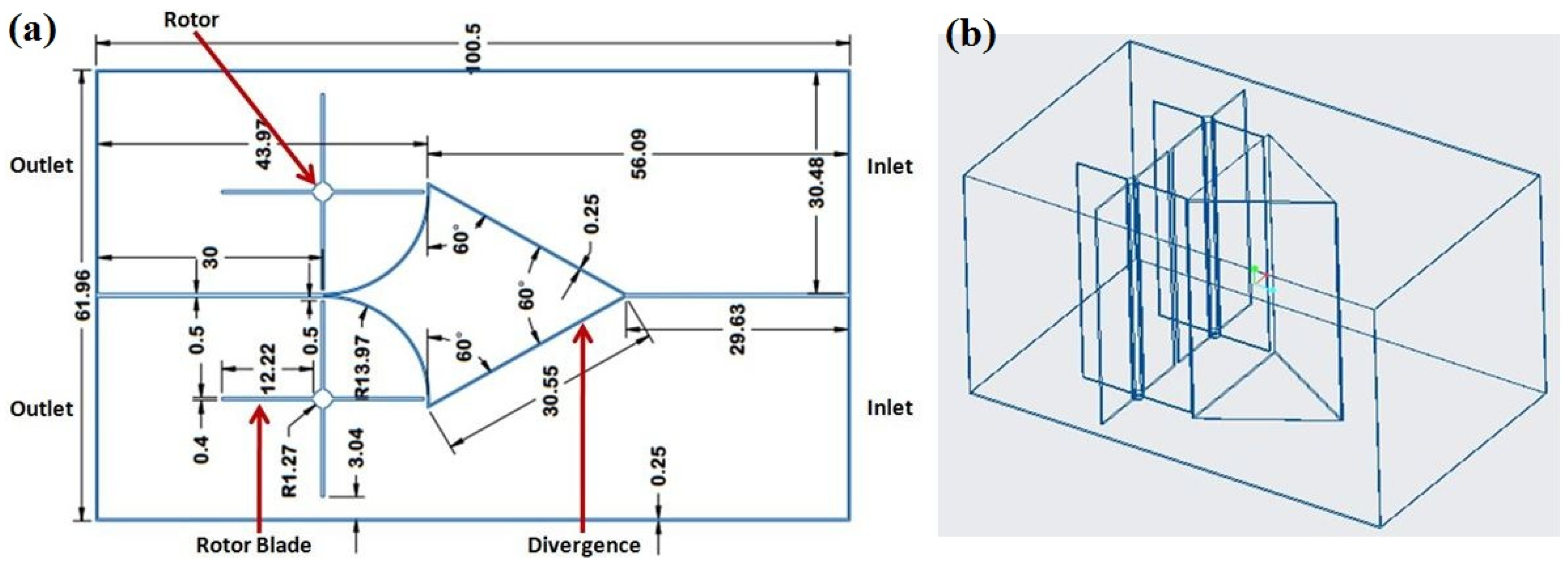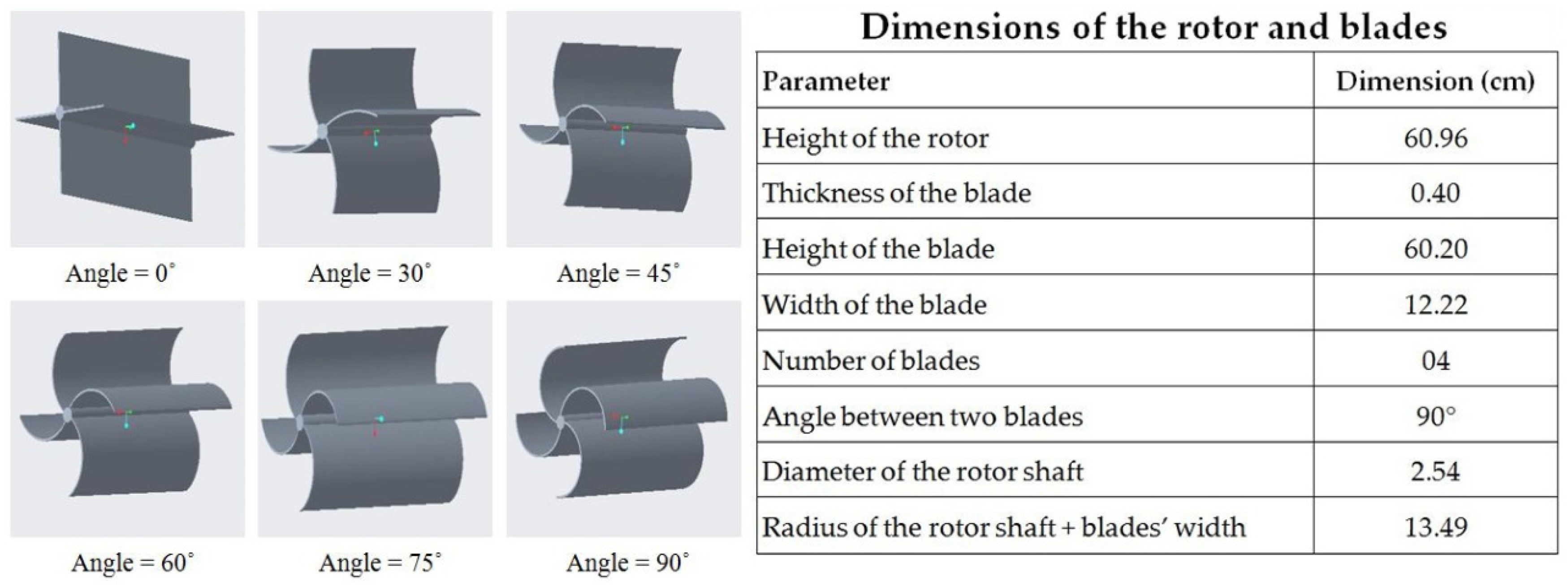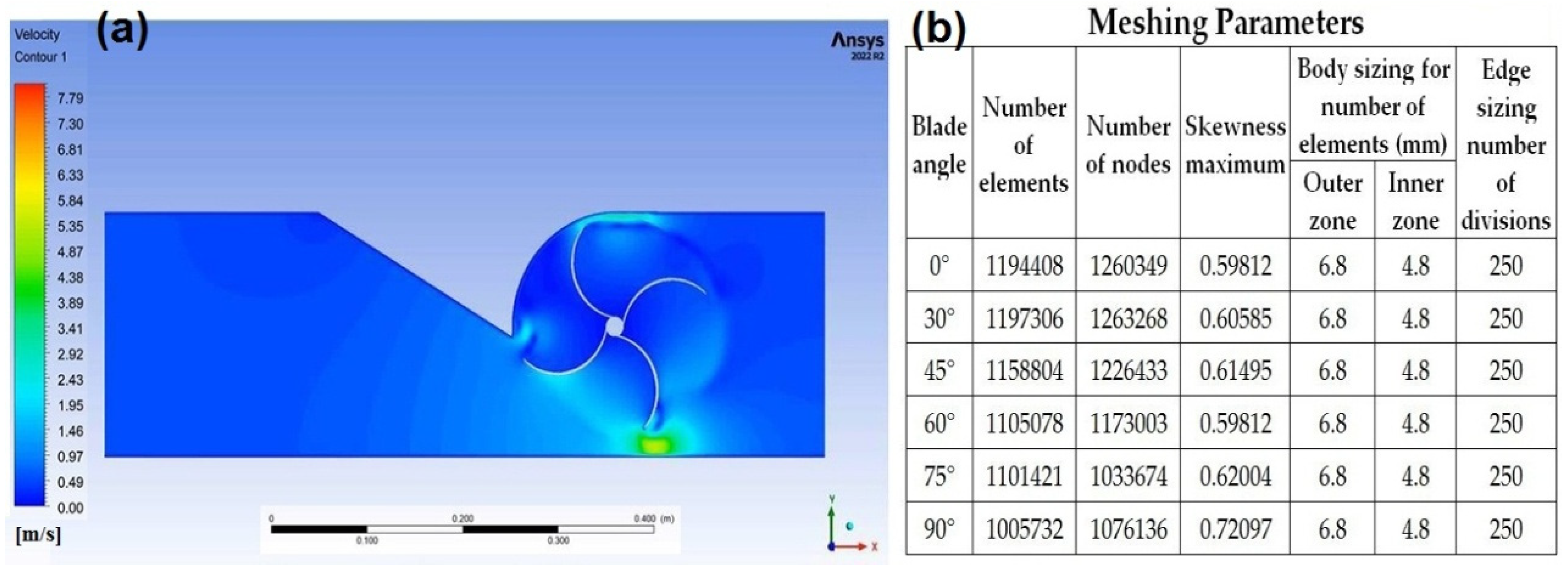Design Modification and Prototype Development of a Cross-Flow Turbine for a Low/Zero-Head Water Stream †
Abstract
:1. Introduction
2. Methodology and Design
ANSYS Simulation
3. Results and Discussion
3.1. Simulation Results
3.2. Experimental Results
4. Conclusions
Author Contributions
Funding
Institutional Review Board Statement
Informed Consent Statement
Data Availability Statement
Conflicts of Interest
References
- Desai, V.R.; Aziz, N.M. An Experimental Investigation of Cross-Flow Turbine Efficiency. J. Fluids Eng. 1994, 116, 545–550. [Google Scholar] [CrossRef]
- MKhan, A.; Badshah, S. Research Article Design and Analysis of Cross Flow Turbine for Micro Hydro Power Application using Sewerage Water. Res. J. Appl. Sci. Eng. Technol. 2014, 8, 821–828. [Google Scholar]
- Chattha, J.A.; Khan, M.S.; Wasif, S.T.; Ghani, O.A.; Zia, M.O.; Hamid, Z. Design of a cross flow turbine for a micro-hydro power application. Power Conf. 2010, 49354, 637–644. [Google Scholar]
- Nasir, B.A. Design of high efficiency cross-flow turbine for hydro-power plant. Int. J. Eng. Adv. Technol. 2013, 2, 308–311. [Google Scholar]




Disclaimer/Publisher’s Note: The statements, opinions and data contained in all publications are solely those of the individual author(s) and contributor(s) and not of MDPI and/or the editor(s). MDPI and/or the editor(s) disclaim responsibility for any injury to people or property resulting from any ideas, methods, instructions or products referred to in the content. |
© 2023 by the authors. Licensee MDPI, Basel, Switzerland. This article is an open access article distributed under the terms and conditions of the Creative Commons Attribution (CC BY) license (https://creativecommons.org/licenses/by/4.0/).
Share and Cite
Ali, A.; Azam, M.Z.; Faiq, M.; Asghar, G. Design Modification and Prototype Development of a Cross-Flow Turbine for a Low/Zero-Head Water Stream. Eng. Proc. 2023, 45, 49. https://doi.org/10.3390/engproc2023045049
Ali A, Azam MZ, Faiq M, Asghar G. Design Modification and Prototype Development of a Cross-Flow Turbine for a Low/Zero-Head Water Stream. Engineering Proceedings. 2023; 45(1):49. https://doi.org/10.3390/engproc2023045049
Chicago/Turabian StyleAli, Asim, Muhammad Zohaib Azam, Muhammad Faiq, and Ghulam Asghar. 2023. "Design Modification and Prototype Development of a Cross-Flow Turbine for a Low/Zero-Head Water Stream" Engineering Proceedings 45, no. 1: 49. https://doi.org/10.3390/engproc2023045049
APA StyleAli, A., Azam, M. Z., Faiq, M., & Asghar, G. (2023). Design Modification and Prototype Development of a Cross-Flow Turbine for a Low/Zero-Head Water Stream. Engineering Proceedings, 45(1), 49. https://doi.org/10.3390/engproc2023045049





